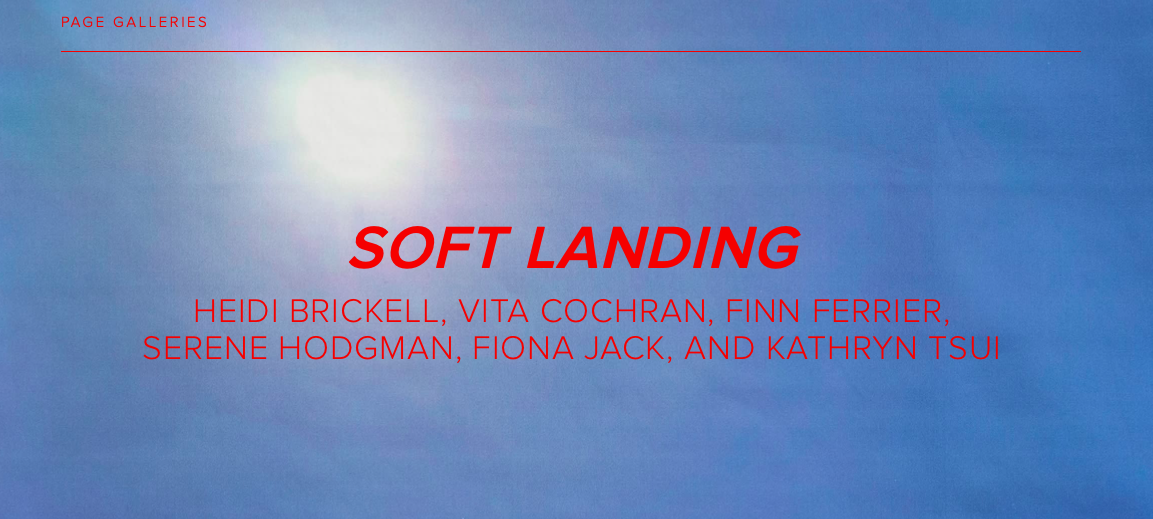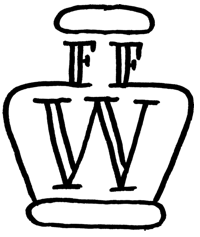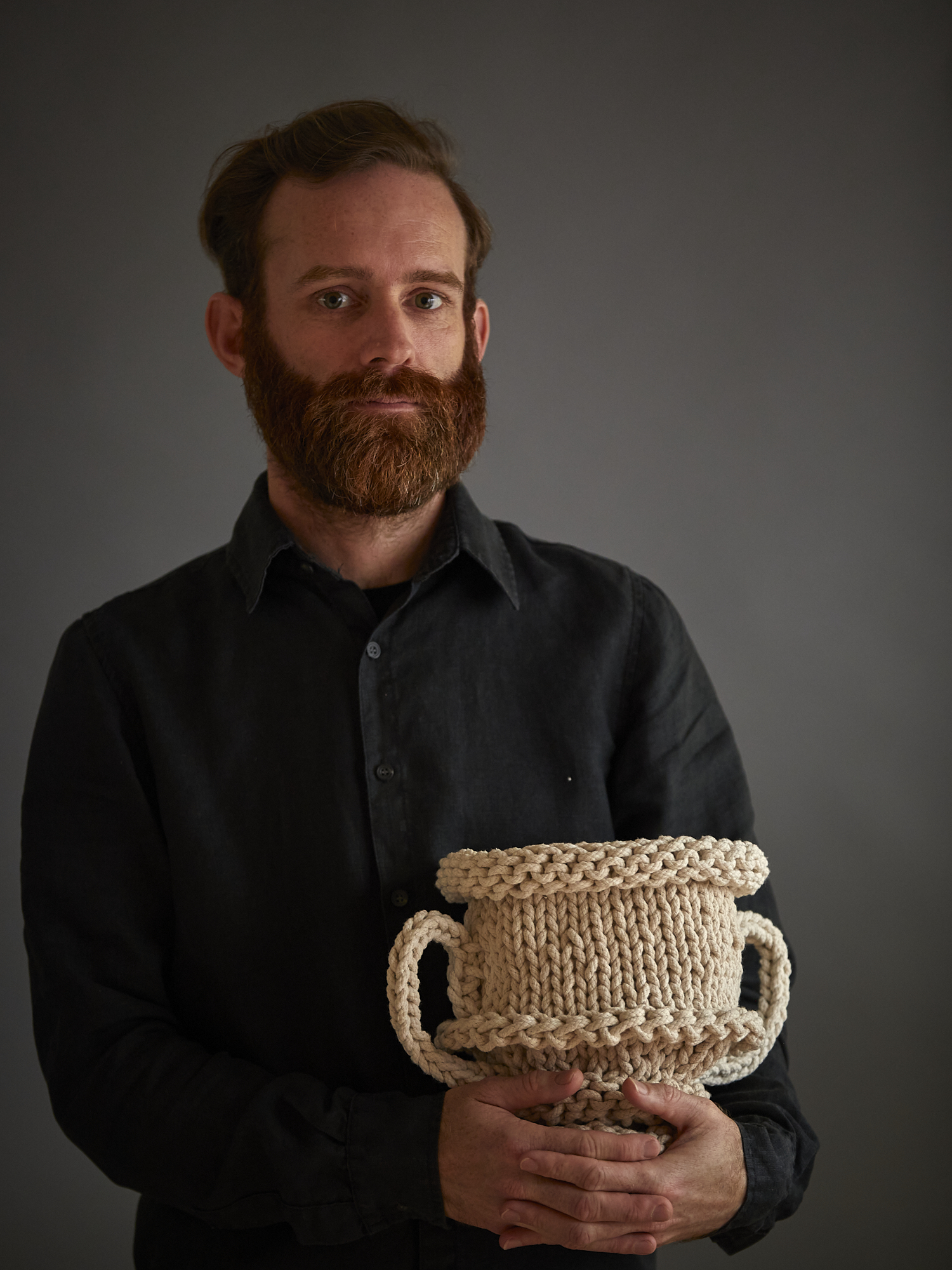



Soft Landing: Page Galleries, Wellinton. Installation Images by Cheska Brown.
(background work by Kathryn Tsui and Heidi Brckell)
24/02/22 - 19/03/22
SOFT LANDING
HEIDI BRICKELL,
VITA COCHRAN,
FINN FERRIER,
SERENE HODGMAN,
FIONA JACK,
KATHRYN TSUI
SOFT LANDING
HEIDI BRICKELL,
VITA COCHRAN,
FINN FERRIER,
SERENE HODGMAN,
FIONA JACK,
KATHRYN TSUI
Soft Landing is a group exhibition featuring work from artists Heidi Brickell, Vita Cochran, Finn Ferrier, Serene Hodgman, Fiona Jack, and Kathryn Tsui.
The exhibition brings together a selection of artists who each engage with textiles on their own terms, incorporating material aspects into distinctly different modes of making. While their practices vary greatly, many of these artists share a similar engagement with narrative – real or imagined – and a preoccupation with re-addressing or re-presenting histories.
Historically speaking, traditional textile arts have somewhat been maligned and dismissed as insubstantial. But it is arguably this exact history that makes textiles so engaging; their tactility and ostensibly quiet nature allowing for the deft navigation of complex ideas, providing a soft landing for sometimes heavily political concepts.
https://www.pagegalleries.co.nz/
Soft Landing is presented in conjunction with Threads: Textile Festival, a programme of art events that will take place across Te Whanganui-a-Tara from 16-20 March 2022. Timed to coincide with the Aotearoa New Zealand Festival of the Arts, the festival will shed light on contemporary and historical textile practices in Aotearoa, placing renewed emphasis on the medium.
⌘⌘⌘⌘⌘⌘⌘⌘⌘⌘⌘⌘⌘⌘⌘⌘⌘
Led by thread
[Catalogue text by Emma Ng]
Thread—fibre that’s been worked into long strands—can loop and twist, or stretch taut. It can follow a needle into a tight corner or around a gentle curve. Flexing and stiffening with serpentine grace, thread is supple as the human tongue: it can shape itself around a sound, find the hard edges of a word, and arrange itself into patterns that become recognisable as a kind of language.
Fibre can be twisted into cord, which can become rope. Finn Ferrier—who works lengths of rope into soft vessels that look more like urns and vases than baskets—says, “Rope is a very practical material… Rope is designed to work under load. When I work with rope, however, I’m giving it a holiday.” All of the fibres in this exhibition are on a kind of holiday from strict utility, allowed to loosen, and with the extra slack, turn lyrical and expressive.
The six artists in Soft Landing nurture their own tactile languages with each twist of the thread. Many of them have other traditions and ways of working in mind—ceramics, whakairo, machine weaving. The forms they produce here, in thread, have etymologies that are stitched into the big universe of knowing through making, connected to other places, times, and people.
⌘
A single thread can be eased from the edge of a piece of canvas—free again—becoming a fluid line to be shaped into a hovering drawing. Heidi Brickell fixes these thread drawings to the surface of stretched canvases, which themselves have been collaged, woven, frayed, and daubed with paint. Each artwork is an intricate interplay between image and ground, in the same way that a relief carving is neither foreground nor background.
Heidi has described the way that learning te reo Māori meant becoming accustomed to new shapes and cadences, “The whole geometry of Māori was different… It was like watching the outlines of the way I knew the world to be carved up in English dissolve and be redrawn…”
Heidi’s artworks play with this threshold, where the known bleeds into the unknown. On the surface of her canvases, threads move in and out of recognisable forms—finding known geometries, like the feeling of the tongue and lips shaping themselves around a familiar phrase. Heidi’s threads whisper around spiraling forms, echoing the genealogical curves of whakairo and the long fingers of waving kelp. They settle into the angles of existing language, though the voice is distinctive and new.
⌘
Wool can be passed through cloth with the aid of a needle, hiding and revealing itself as it plunges through the surface of the fabric to play on both sides. Vita Cochran has created these stitched tapestries by allowing the needle to lead, so that the designs evolve in sympathy with the natural grid of the canvas backing. Freed from instruction and prior planning, she describes these works as “tapestry liberated from the kitset”.
Here, three framed works are presented alongside a pocket—with interchangeable straps!—and a doorstop. The latter is a tapestry-covered brick, a nod to similar bricks that hold the doors open at two of Vita’s favourite craft shops—one in Wellington, and one in Sydney. Just as Finn Ferrier described giving rope a holiday, Vita’s brick takes respite from its utilitarian brickness. It has been picked from the crowd and allowed to get dressed, in a bespoke sleeve of soft embellishment, stitched with care and craft.
Vita’s works seem to burst with a liberatory spirit; there’s often the sense that they are trying to break through the perceived limits of ornament and find their way back into everyday life. Like the dancing compositions of her aesthetic relations, Sophie Taeuber-Arp and Sonia Delaunay, Vita’s sensitive harmonies of colour and shape are typically beautiful, but the works also seek to be caressed, held, and worn. They desire to be touched and appreciated through use.
⌘
The luminous threads in a length of satin ribbon can mimic the startling language of pua
(flowers) and leaves—a lexicon of colour and form shared by the insects and birds. Serene Hodgman’s artworks are made using materials readily available in emporiums and local stores. She borrows a phrase, here and there, from other textile practices from around the Pacific: there’s the trace of Cook Islands tivaevae and Tongan monomono, and of fine mats customarily woven from natural fibres.
The mats that Serene uses in her artworks are made from synthetic fibres. In this way, these mats are a neologism—a new addition to an existing language—representing the adaption of Pacific mats through the introduction of new materials.
Serene works ribbon through these synthetic mats to create designs that dance on their red and blue surfaces. The mats themselves are woven with graphic patterns inspired by flowers and foliage, so the effect is a layering of languages. Each work holds within it different ways to say the same thing—a meeting of different visual dialects.
⌘
Thread can be worked into the image of other threads, tugging at memory. Kathryn Tsui and her mother, Doris, have cross-stitched panels that, at first-glance, resemble the warp and weft of the red-white-blue shopper bags that are ubiquitous in Hong Kong. These bags are part of a visual language familiar to Kathryn from when her family lived in Hong Kong between 1978 and 1982.
These bags represent a confluence of global relations. This form of nylon cloth came to Hong Kong via Japan and Taiwan. In the 1970s and 80s Hong Kong residents carried red-white-blue bags (filled with consumer goods) over the border into Mainland China, as China adjusted its political and economic relationship with the rest of the world. Any connection of the red-white-blue bag to Scotland, though, is long forgotten—signalling instead how far tartan has strayed from its origins as a highly localised weaving practice.
Kathryn and Doris turn the economy of the mass-produced nylon bags on its head through hours of careful hand stitching. Kathryn observes that in Hong Kong these bags are commonly referred to as ‘amah’ bags—amah being the female domestic workers relied upon by many Hong Kong households. Drawing a connection between cheap labour and mass production through the amah bag, Kathryn and Doris’s craft is intended as an interruption to the economic logic of a society dependent on these conditions.
⌘
Kathryn Tsui says that it’s taken over 300 hours for her and her mother to produce the works in this show. For many of the other artists in this exhibition, their work is similarly labour intensive and time consuming.
In her opening chapter of A Rainbow Reader—a chapter about the colour red—Tessa Laird illustrates the inextricable bind of craft and its labour. She writes about journalist Brian Murphy coming across two children weaving Persian carpets in Iran. Abdulmanon, the carpet-seller overseeing their work anticipates Murphy’s Western judgment on this use of child labour, parrying with the following series of questions:
“Time is something man created to bring order. Am I right? We are the ones who long ago sliced it up into hours, minutes, days. Are these pieces the same length for all? Yes, that is true, you could answer. But think again. It is not true at all. Is an hour praying the same as digging a ditch? Is an hour making a carpet the same as an hour making bricks?”
The question is, of course, is one of control. Who is the craft being undertaken for, and what control do those doing the producing have? In this chapter focused on red, Laird inevitably finds her way to Marxist impulses in contemporary art. Through the work of Daniel Malone and Ralph Paine, she introduces the idea of a “red thread”—a metaphorical device that allows us to trace “revolutionary undercurrent” across dispersed places and times.
⌘
Thread can be stitched back into language, formed into words and symbols, and embroidered
into cloth to form fabric banners. Fiona Jack has often worked with banners, drawn to their “long service as both emancipatory tools and gathering devices for groups of people”. There’s a clear red thread that runs through Fiona’s work—including a series called Our Red Aunt, which celebrated the life of Helen Crawfurd, a committed Scottish suffragist and Communist (and Fiona’s great grand-aunt).
Fiona has also worked with the banner’s counter form—the commercial billboard—and in this series, both languages are drawn together. While banners and billboards usually broadcast loud messages, Fiona’s works swing between whispered words and booming declarations. The largest banner in this series reads “EXISTENTIAL DOOM”, announcing the anxieties these works are born out of. The other works—some, very small—feature fabrics ranging from cotton to a soft blankie, and are printed with photographs taken by Fiona during the 2020 lockdown. The images are of banal things: broccoli at Pak ‘n’ Save, a dirty tea towel, the sun in the sky. Each banner is machine embroidered with block capitals—reading either “EVERYTHING” or “NOTHING”.
Between these two words, Fiona grasps at the contradictions that we lurch between on any given day—the terrible clash of widespread apathy with the oppressive doom of climate crisis and the pandemic. We need emancipatory tools and gathering devices, and in these challenging times there’s perhaps no greater comfort than a banner that could double as a little blankie.
⌘
Rope, with its many fibres twisting as one, can be eased into loops and knots that hold each other; friction allowing forms to wind upwards into the air. For Finn Ferrier, rope is a material that allows him to work adjacent to ceramics, making pots without a wheel and without mess. No glue or other chemical bonds are used. With rope, Finn can make a pot on the couch. The finished vessels could even be un-knotted, becoming, once again, just a length of rope. In this way, the vessels never lose sight of their own rope-ness; they could always be unknit, ready to be wound into another form, another phrase, when something new needs to be said.
Finn calls these rope works “wharfware”—imagining them as the type of things a sailor might make in their time off. While noting that clay has historically been used to make rope baskets watertight, Finn has begun to see what he can do with pure rope, pursuing its material qualities, and seeing how far he can go in manipulating its language. There are lumpy bits and drooping rims, but also long thin handles and elegant necks. Dovetailing stockinette stitches rise up, and scalloped garter stitches roll into bulges, lips and feet.
Finn has begun to knit himself into the work. He spoke about the appearance of autobiographical forms—alongside the historical influences that have always informed his wharfware—at Objectspace last year. It’s well worth reading or watching his brilliant lecture online. Covid Cup (Boss Cup, Level 4) is a trophy for “the whole of New Zealand” for their efforts to keep “the Delta variant at bay.” Other vessels erupt with ropey lumps; inflections that evoke the accretions of shells, knobbly tree trunks, or the uncontrollable and sometimes undesirable mutations of the human body.
⌘
When you spend a lot of time making things with your hands, it’s perhaps inevitable that you and the work begin to stitch into one another. It’s through hours of careful work, of becoming acquainted with the material—a process that cannot be rushed—that each of these artists has begun to develop their own language in cloth and fibre. Sometimes the words we know prove inadequate, and it is only through the language of thread and hands that the fullness of memories, connections, and feelings can be articulated—a kind of language that eludes language itself.
—K. Emma Ng, February 2022



